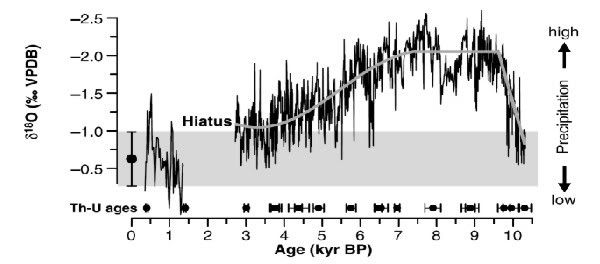The New Year may merely represent an arbitrary point in the Earth’s orbit with no intrinsic significance, but the flipping over of the digits on the calendar seems to have a real psychological effect, compelling us to dream up grandiose promises to improve ourselves and our lives. Of course, we then spectacularly fail to keep most of them, but this month’s edition of Philosophia Naturalis attempts to mirror this spirit of self-improvement by asking: what makes science blogging good science blogging? A trawl through the past month’s activity in the science and technology blogosphere suggests that, at their best, scibloggers perform a number of vital functions, which we can all try to emulate:
To augment the media coverage of science
It’s an unfortunate fact that you don’t have to know anything about science to be a science correspondent for a major newspaper or news channel – if anything, having a science degree probably counts against you. The very best people overcome this, of course, but a lot of mainstream science reporting seems to consist of slightly rewritten departmental press releases (which may also have been ‘rewritten for clarity’ by non-scientists). If you want nuance and context, science bloggers are on hand to pick up those vaguely explained findings in the mainstream media – be it
reports of running water on Mars, the
latest results from the Stardust probe,
the origin of weird gamma ray bursts,
the topology of the Universe, or
the year’s top 5 nanotechnology breakthroughs - and run with them.
To talk about the ‘unsexy’ science the media does not reach
Reports of cutting-edge breakthroughs are all very well, but to really understand what those breakthroughs mean you need to know the basic science as well. Blogging gives us scientists the opportunity to talk about the nuts and bolts of their disciplines, such as
how particles detectors work (in the run up to the
LHC being switched on next year), or
how stars manufacture the elements that form us all. We can also rectify the puzzling lack of media interest in our particular (and, obviously, intensely interesting) subfield by waffling to our heart’s content about
strange correlations between the structure of the Cosmic Microwave Background and the orientation of our solar system, or
the ‘interpretation question’ in quantum mechanics.
We can also compensate for the media’s notoriously short attention span; the results being breathlessly publicised are only a snapshot of research programmes which can play out over decades, as various hypotheses are proposed, tested, then discarded or modified. For example, there was a lot of excitement a few months back about
possible liquid water on Enceladus, but it is
interested bloggers who now tell us that
this is not the only possible explanation for
those geyser-like plumes.
To show that scientists are people too
It’s a sad fact that the common caricatures of scientists – as soulless reductionists with no empathy, social skills, or ethical qualms (with a nice sideline in big frickin’ lasers and maniacal laughter) are not often recognised as exaggerations. Blogging gives scientists a chance to express their real voices and personalities, and show that our lives are in fact, fairly normal: OK,
we may talk about methods of solving Rubik’s cubes as well as soap operas, and we may have
appalling taste in T-shirts, but our jobs have both
good days and
bad days. And
worse days. And
days when our experiments produce stupid results. We make mistakes. And, of course, we have arguments. Big arguments. Over things like
whether string theory is the best thing since sliced bread or a half baked blind alley, or
whether the entire universe can usefully be described as a computer, or if
worries that climate change science is being stretched too far to gain political traction are justified. We find the idea that we're all engaged in a battle to suppress The Truth about global warming, or evolution, or the age of the Earth, rather hilarious - any 'orthodox conspiracy' of more than two scientists would undergo a schism faster than you could say, 'splitters!'
To fight the forces of ignorance and antiscience
There is a lot of silly science out there. The media sometimes shoots itself in the foot by
giving silly answers to nonsensical questions, or giving free publicity to
pointless mathematical concepts (though
we can also be slightly more generous).
But darker forces, which don’t just mindlessly mangle science but actively slander it, are also at work. Defending against these attacks might be like playing whack-a-mole, but it must be done: and it’s nice to see that even if the US National Park Service’s
are somewhat coy over the age and geological history of the Grand Canyon, there are science bloggers
willing to step into the breach.
To provide the wow factor
Who better than scientists to inspire people with their tales of just how cool the Universe is? Not enough of us take the time, which is why
we still miss Carl Sagan ten years after his passing. However, if a picture speaks a thousand words, then Phil has amassed
ten thousand spectacular words over at Bad Astronomy (plus a few more of his own), and
the HiRise team also do their bit with
more stunning images from the Mars Reconnaissance Orbiter. Us geologists produce
some very cool pictures too, so maybe I should take this one particularly to heart in the coming year.
Thus concludes this month’s edition of
Philosphia Naturalis - may science blogging continue to flourish in 2007. Thanks to you all for reading, and to the contributers (willing and unwilling) for writing. PN #6 will be hosted by Charles Daney at
Science and Reason on Thursday, February 1. Send your nominations and suggestions to carnival@scienceandreason.net, as explained
here. We’re also looking for bloggers with a physical sciences/technology focus for hosting future editions; more information, and links to past editions, can be found at the
Philosophia Naturalis site.











